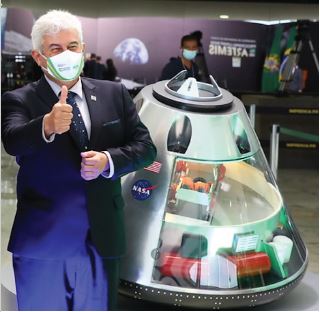New Zealand
Rivals Launch Military Satellites Amid U.S.-led Space Defense Drills


A flurry of military and intelligence satellite launches by rival powers this month came as the United States and two dozen partner nations wrapped up the largest global space defense wargame in history.
Russia launched what some leaders have described as a spy satellite for Iran and its own on-orbit snooping satellite Cosmos-2558, which is circling Earth in an orbit conspicuously close to a recently launched U.S. National Reconnaissance Office satellite, a Netherlands researcher confirmed.
2020 Global Space Economy Climbs Despite Turbulent Year, Disrupted Government Spending


International successes in space, such as the Hope, Perseverance, and the Zhurong missions to Mars, don’t happen without years of advance government spending. In 2020, as nations struggled to overcome a global pandemic, space spending varied widely across countries and agencies.
2019 TSRQ3 – Education STEM Proficiency


The science, technology, engineering, and mathematics (STEM) workforce is at the core of the space industry—from the mathematicians and astronomers who analyze space to the engineers who design and build the launch vehicles that get us there. This workforce is enabled . . .
2019 TSRQ2 – Economy: Non-U.S. Government Space Investment


Growth in the government investment sector of the space economy outpaced commercial sectors as the U.S. and non-U.S. government shares of the global space economy between 2017 and 2018. . .
2017 – Government Space Budgets
Global government spending increased in 2017, totaling $76.2 billion, up from $72.7 billion in 2016. Government spending accounted for 19.9% of the global space economy . . .
2017 – U.S. Spaceports – Snapshot
During 2017, five spaceports were used by U.S. orbital launch operators: Cape Canaveral Air Force Station (CCAFS), Florida; Kennedy Space Center (KSC) . . .
2014 – Military Communications
Global, dedicated, and secure communications networks are vital to governments, militaries, and agencies around the world. Increased demand for capacity—particularly secure connectivity using non-commercial frequency bands—continued to drive deployment of dedicated military communications satellite systems. The U.S. military bought significant capacity from commercial operators such as Intelsat and SES in 2014. However, the way the military buys the bandwidth has been criticized by commercial satellite communications services as expensive and outdated.
2013 – Military Communications
Dedicated and secure communications links are vital to defense agencies around the world. Increasing demand for capacity—particularly secure connectivity using non-commercial frequency bands—has driven the deployment of dedicated military communications satellites. The U.S. military buys a significant portion of its capacity from commercial operators such as Intelsat and SES. However, the United States also relies on military-specific systems such as the Wideband Global SATCOM (WGS) program, supplying dedicated communications to U.S. and allied military forces around the globe.
Perspective – TSR 2013
2012 – Ground Observatories, Astronomy
Astronomers are laying the groundwork for a new generation of extraordinarily large observatories. The Square Kilometer Array (SKA) Telescope will be the world’s largest and most sensitive radio telescope ever built. The SKA takes its name from the combined size of the collecting area of the thousands of individual dishes that comprise it, making it far more sensitive than any existing radio telescope.